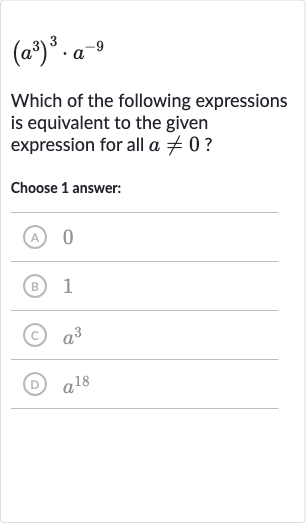Full solution
Q. Which of the following expressions is equivalent to the given expression for all ?Choose answer:(A) (B) (C) (D)
- Simplify expression using power of a power rule: We need to simplify the expression .Using the power of a power rule, , we can simplify the first part of the expression:.
- Combine exponents using product of powers rule: Now we have .Using the product of powers rule, , we can combine the exponents:.
- Apply zero exponent rule: According to the zero exponent rule, any non-zero number raised to the power of is : where is not equal to .
- Final result and corresponding choice: We have found that the expression simplifies to . Therefore, the equivalent expression is , which corresponds to choice (B).
More problems from Compare linear and exponential growth
QuestionGet tutor help
QuestionGet tutor help
QuestionGet tutor help
QuestionGet tutor help
QuestionGet tutor help
QuestionGet tutor help
QuestionGet tutor help

